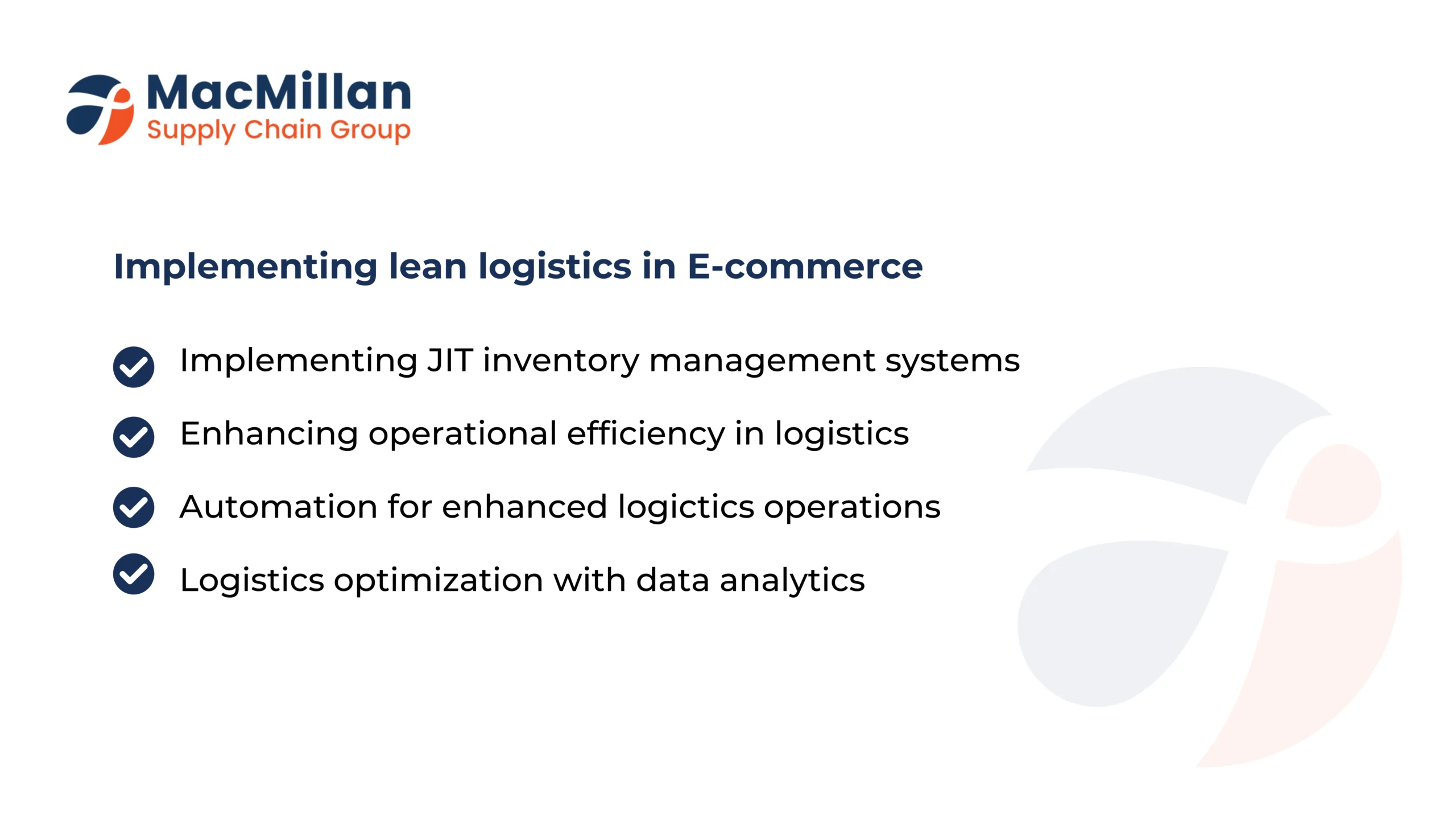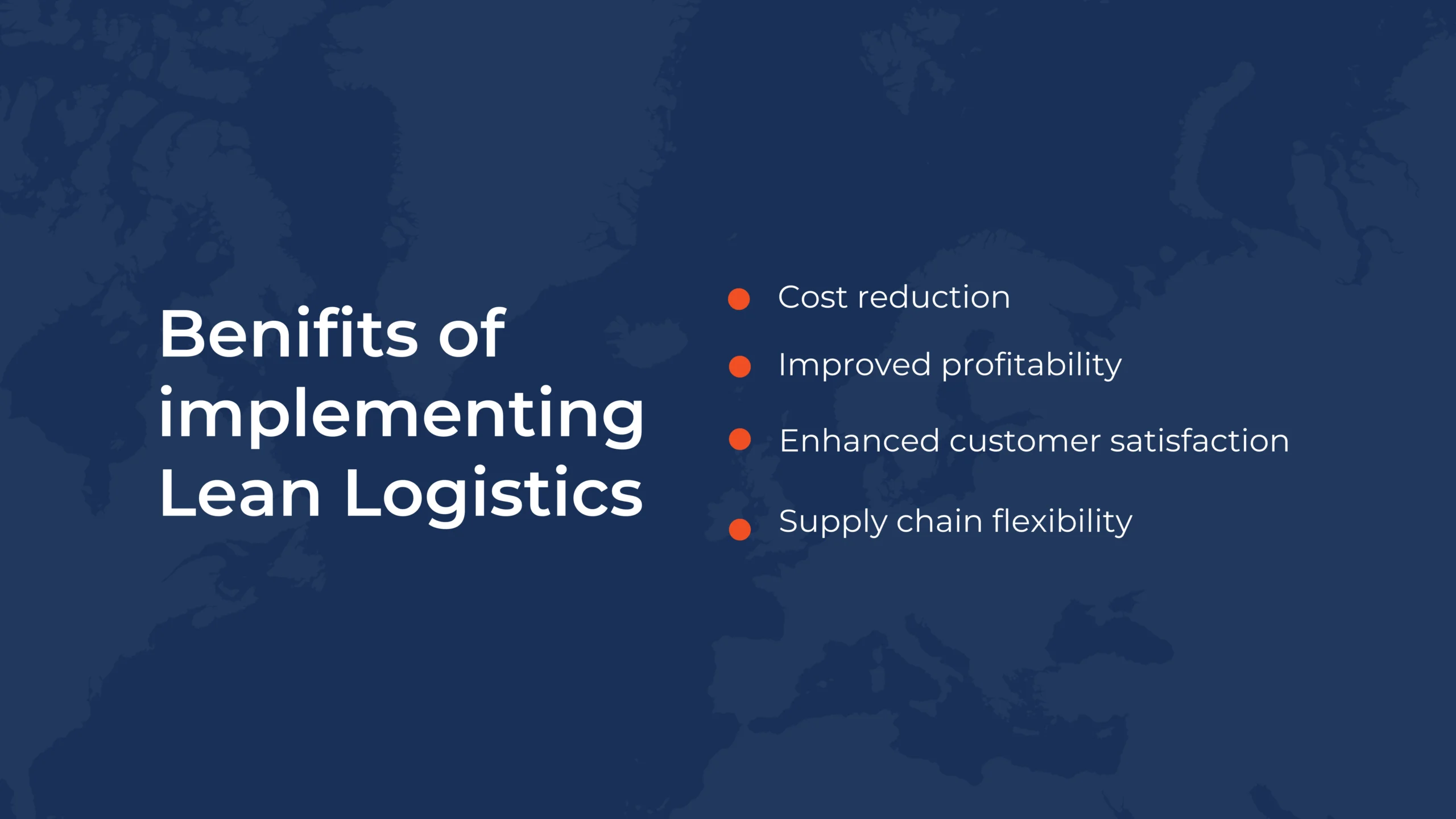To eliminate all forms of waste, many companies focus on maintaining lean logistics. By aligning supply chain management with lean principles, you can enhance your brand’s operational efficiency, cut logistics costs, and provide superior customer experience.
In this article, we will explore the core principles of lean logistics, analyze its benefits, and offer practical tips and best practices MacMillan uses to help you streamline your own logistics operations.
Understanding Lean Logistics
Lean logistics is a strategic approach to logistics management used to identify and eliminate waste within your supply chain. The primary objective is to optimize operations by removing unnecessary processes. By refining the continuous flow of products, lean logistics helps reduce costs and significantly boosts efficiency, ensuring a more effective supply chain.
Key factors of Lean Logistics
Lean logistics operations are driven by several key principles, such as:
Waste Reduction
Waste manifests in various forms in 3pl warehousing, and lean logistics aim to minimize all of them. Specifically, lean logistics focus on reducing waste in:
- Time: Minimizing lead times and transit times while providing real-time visibility.
- Materials: Reducing excess raw materials and packaging materials.
- Products: Preventing lost, damaged, or obsolete inventory with inventory tracking.
- Effort: Eliminating unnecessary tasks to better utilize human labor and minimize warehousing waste.
Product Flow focus
A crucial aspect of lean logistics is improving efficiency and throughput. This involves ensuring that inventory flows seamlessly through the supply chain. MacMillan focuses on processes such as order processing, picking, packing, and shipping performed accurately, without unnecessary delays or interruptions.
Value Stream Mapping
Lean logistics relies on differentiating value-adding elements from superfluous ones. Mapping the value chain across operations helps identify unnecessary activities, focus on delays.
Lean Logistics vs. Traditional Logistics
Traditional logistics prioritize outcomes over processes, focusing on executing all necessary tasks to deliver orders to customers, often with little attention to the efficiency of these tasks. This approach can result in:
- Outdated Processes
- Higher Labor and Storage Costs
- Excess or Obsolete Inventory
However, lean logistics aims on delivering high-quality output with minimal waste of effort, and materials.
Moreover, lean logistics equip brands to better navigate unexpected challenges compared to traditional logistics systems. With minimal waste and extraneous processes, it is easier to adapt to supply chain bottlenecks.
Implementing Lean Logistics in E-commerce
Here are several strategies companies can use to implement lean logistics management, minimizing waste and enhancing efficiency in their operations.
Implement JIT Inventory Management Systems
Many businesses attempt to prevent stockouts by ordering and holding large amounts of inventory. However, this approach often leads to excess inventory, increased holding costs, and eventually, deadstock.
Adopting lean inventory management strategies, such as the just-in-time (JIT) system, can mitigate these issues. JIT relies on a pull system where inventory is acquired based on actual customer demand. This means that inventory is procured in small volumes and replenished to match customer demand.
While JIT reduces waste and minimizes costs, it requires precise procurement timing and accurate tracking with system integrations.
Implementing automatic reorder point notifications can also support your JIT strategy. These notifications tell you when inventory reaches a specific threshold, ensuring timely restocking to maintain optimal inventory levels.
Enhancing Operational Efficiency in Logistics
By auditing your warehouse processes and identifying inefficient activities, you can save time and effort across your supply chain operations.
Consider optimizing key logistics operations such as:
Inventory Receiving: Designate a specific area for receiving inventory and ensure thorough counting and inspection for potential damage.
- Warehouse Layout: Arrange your warehouse to allow quick and safe travel for workers, maintain wide aisles for equipment passage, and store inventory in easily accessible locations.
- Picking: Minimize travel time with strategic pick lists that chart optimized routes through the warehouse. Implement picking strategies like batch picking, zone picking, or wave picking to handle more orders with zero errors like MacMillan does.
- Packing: Ensure packers are trained to place items in boxes or bags efficiently and correctly.
Automation for Enhanced Logistics operations
Supply chain automation tools are essential for logistics operations and reducing manual labor. Implementing automation can include:
- Automated Order Processing: MacMillan uses software that quickly confirms order details and advances them to the next stage of fulfillment, eliminating the need for manual data entry and provides integrated WMS and TMS.
- Optimal Inventory Distribution: Usage of tools that automatically assign orders to the suitable fulfillment center, reducing shipping times and costs.
- Pallet Algorithms: Utilize algorithms to identify the optimal packaging size for each order automatically, enhancing packing efficiency and storage sizes.
- Automated Sorting Machines: Implement machines that scan each package to verify dimensions and weights, and automatically sort them into the appropriate carrier lanes.
Logistics Optimization with Data and Analytics
Data is crucial for identifying opportunities to streamline your logistics. By consistently monitoring and analyzing supply chain performance KPIs, inventory analytics, order data, and fulfillment metrics, you can pinpoint which aspects of your logistics operations are efficient.
For instance, MacMillan ensures real-time inventory tracking which enables you to make informed decisions about reorder quantities and inventory control. This, in turn, enhances supply chain workflows and facilitates continuous improvements in the logistics operations.
Advantages of Implementing Lean Logistics
Implementing lean logistics in your operations offers several significant advantages:
Cost Reduction
Lean logistics focuses on eliminating waste and inefficiencies, which naturally reduces costs associated with unnecessary transportation, excess inventory, storage, and prolonged wait times.
Improved Profitability
By minimizing costs and enhancing operational efficiency, lean logistics boosts your brand’s profitability. organize order cycle times contribute to maximizing revenue generation.
Enhanced Customer Satisfaction
Optimized shipping logistics in lean operations ensure faster deliveries. Efficient fulfillment processes and optimal delivery routes lead to customer satisfaction.
Supply Chain Flexibility
Reduced lead times and streamlined processes create an agile supply chain capable of adapting quickly to market changes.
Key Takeaways
Implementing lean logistics is not just a strategy; it’s a pathway to transforming operations for enhanced efficiency and customer satisfaction. By aligning supply chain management with lean practices, businesses can reduce costs associated with waste, unnecessary transportation, and excess inventory.
Through continuous improvement driven by data and analytics, MacMillan can refine their logistics processes, minimize inefficiencies, and strengthen their competitive edge in the dynamic logistics landscape.






